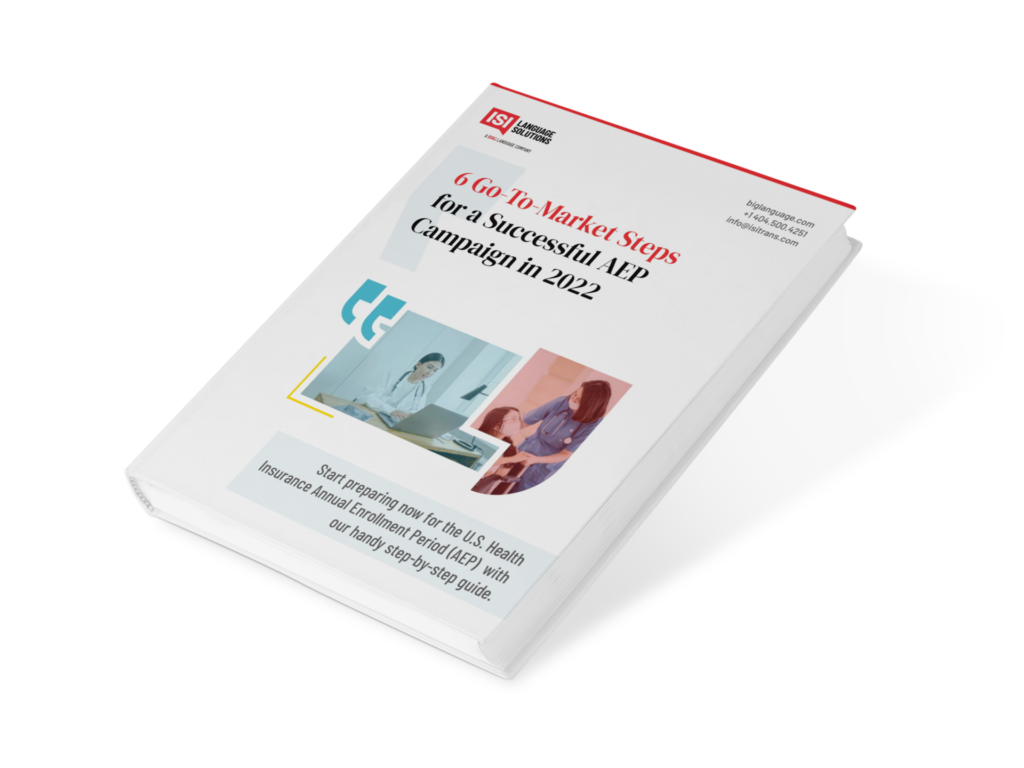Marketing globally means adapting your content to reflect the nuances of each culture. When shifting a US- or European-based marketing effort to Asia, there are many important factors to consider in order to achieve success. Be sure to carefully strategize your entry into new markets, especially in Asian markets. ISI Language Solutions has put Ten Tips for HealthCare Marketing to Asian Consumers.
Asian cultures tend to approach family, health, and healthcare differently than Western audiences might. Most of the assumptions we make about our approach to health don’t hold true elsewhere in the world. To avoid alienating new Asian markets and customers, it is important to consider your approach and strategy to achieve success.
In some Asian markets, consumers are known for their lack of loyalty to brands and their penchant for switching. A Bain study a few years ago found that in China the top five brands in 10 categories lost 30%-60% of their customers in a one-year period. It’s important to carefully strategize your entry into new markets to generate long-lasting customer relationships.
Here are our top tips to consider HealthCare Marketing on your business to a new market in Asia.
Tips for Marketing to Asian Cultures
- Healthcare Culture. Talk with a native or culturally connected individual about the ways people talk about healthcare in this culture. You may find that Asian cultures don’t have as combative of a relationship with illness, preferring to accept some forms of illness as out of their control or inevitable. It is important to match the tone of your message with one that will resound in the country you are trying to reach.
- Family Decisions. Healthcare is often a family decision rather than an individual one in many Asian cultures. Individuals often defer to the wisdom of family members or consult the entire family when making a healthcare choice. Creating a marketing plan that shows that family-driven decision making is respected and encouraged can be effective in many markets. Use language that is more inclusive of families as you create marketing and promotional materials; rather than using “you,” consider “you and your family” and “we.”
- Word Selection. A translator with ample cultural experience in your target country can help you to carefully wordsmith your marketing to attract the desired audience and avoid any unintentionally offensive language. Working with a translator can ensure you avoid any rude, disrespectful, or culturally confusing language. Most languages have double entendres and someone with experience in this particular country will be able to look out for you and make sure your marketing materials truly reflect your intended message.
- Images. Images are a key element of any marketing effort, but not all images appeal equally across every culture. Family focused photos will make a bigger impression on audiences in most Asian cultures.
- Body Language. Study body language and tone in your target culture. This is especially important when developing videos and images. Learn what kinds of body language signal trustworthiness to your desired consumers.
- Holistic Health. Holistic healthcare is very popular in many Asian cultures. Positioning your services in terms of improving overall health rather than as a service that addresses isolated events or ailments may appeal more to Asian communities.
- Digital Content. Social media sharing is a huge factor in Western marketing, but it’s even more the case in Asia. Almost all media activity in China is consumed on mobile devices, with consumers spending, on average, seven hours a day looking at their phones—approximately twice as much time as Americans spend. A strong focus on shareable digital content can help you to better reach consumers in many Asian markets.
- Cultural Differences. Don’t be afraid to change your approach. In a study conducted several years ago, two psychologists showed short animated videos of underwater scenes to Japanese and American participants and then asked them what they had seen. The Americans mentioned larger, faster-moving, brightly-colored objects in the foreground, while the Japanese spoke more about what was going on in the background. The Japanese also talked twice as often as the Americans about the interdependencies between the objects up front and the objects in the background. Understanding that your existing customer sees a fish and your target customer sees an aquarium, you can use this insight to tailor your message and strategy accordingly.
- Colors. Western and Asian cultures associate different meanings with colors. For instance, red symbolizes excitement, passion, love, and danger in Western cultures. In Asian cultures red symbolizes good luck, joy, prosperity, happiness, and a long life. In Western cultures green represents luck, nature, wealth, inexperience, and jealousy. In Eastern cultures green symbolizes youth, fertility, and new life, but it can also mean infidelity. It’s important to consider that the color palette that works for one country or culture may not be suitable for others.
- View of Healthcare Professionals. While this is particularly true in Asian cultures, there are many cultures where respect for a healthcare professional may cause individuals to ask fewer questions for clarity than they might in other contexts. Take extra effort to ensure that your messaging, imagery, and strategy all represent an open environment with caring, listening doctors.
Ready to hire a culturally-situated translator to help you break into a new market in Asia? Learn more about HealthCare Marketing and Contact ISI Language Solutions today!
i. CMO. by Adobe, How To Adjust Your Marketing Approach For Asian Markets, by Carrie So, August 18, 2016
ii. Harvard Business Review What Western Marketers Can Learn from China, Kimberly A. Whitler, May-June 2019 Issue
iii. Harvard Business Review, Are You a Holistic or a Specific Thinker?, by Erin Meyer, April 3, 2014
iv. Shuttershock, Symbolism Of Colors And Color Meanings Around The World, April 3, 2015







